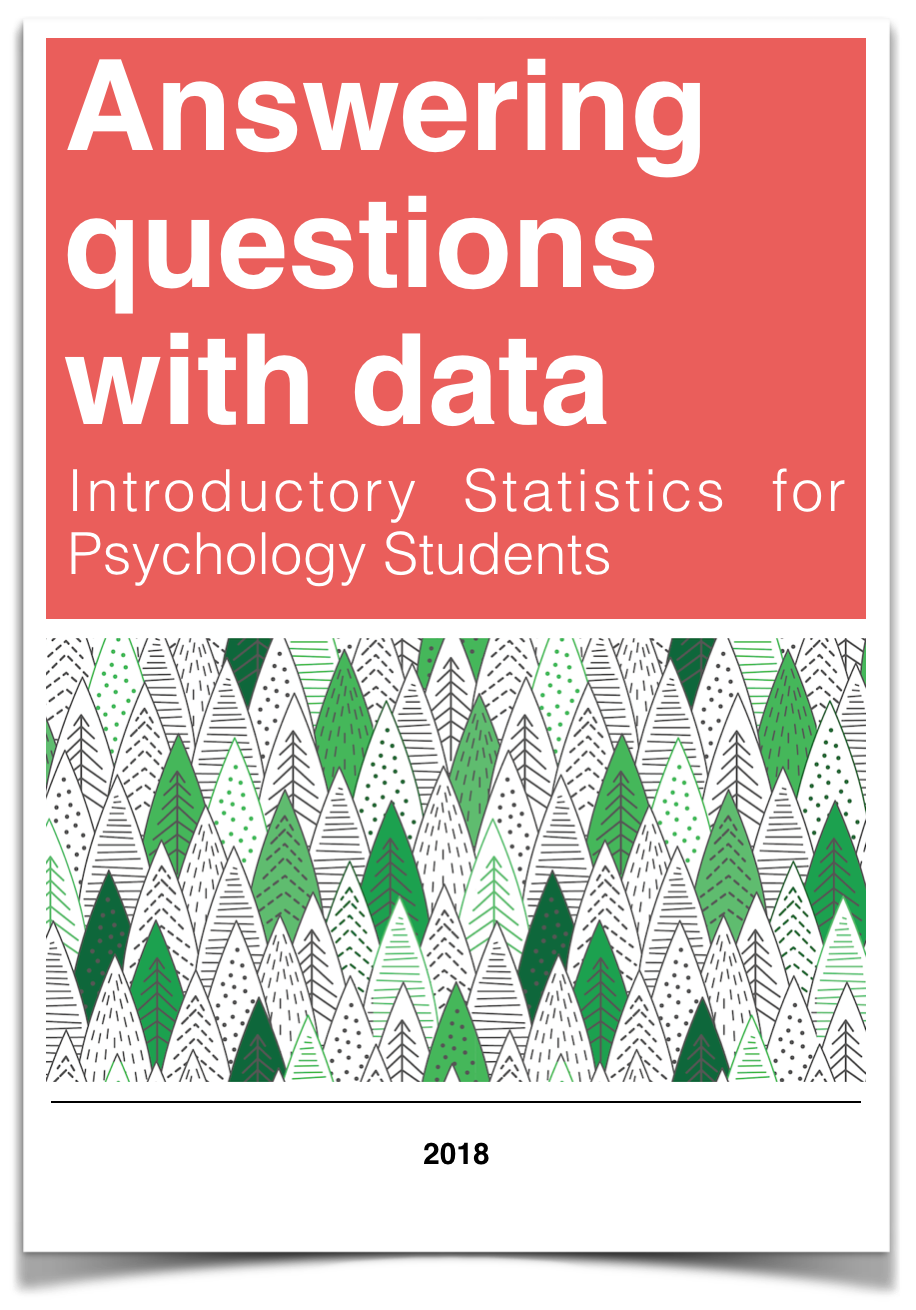Answering questions with data
Preface

Second Draft (version 0.1 = August 18th, 2025)
Welcome to the second edition of this Open Educational Resource (OER) textbook, specifically adapted for Environmental Science students enrolled in the SPEA E-538 statistics course at Indiana University (IU).
This textbook is an adaptation of a thorough introductory statistics textbook originally developed for undergraduate Psychology students by Matthew Crump and colleagues (refer to Acknowledgements for more details). As part of IU’s Course Materials Fellowship Program (CMFP), I’ve had the opportunity to mold this material, refining it to serve as a specialized resource for students studying Environmental Science.
Online Textbook:https://malloryb.github.io/statistics_E538/
Citation for original textbook: Crump, M. J. C., Navarro, D. J., & Suzuki, J. (2019, June 5). Answering Questions with Data (Textbook): Introductory Statistics for Psychology Students. https://doi.org/10.17605/OSF.IO/JZE52
All resources are released under a creative commons licence CC BY-SA 4.0. Click the link to read more about the license, or read more below in the license section.
Acknowledgements
I wish to express my deepest appreciation to the contributors of the original textbook, without whom this adaptation would not have been possible. I am deeply grateful for the expertise and vision of Matthew Crump, Alla Chavarga, Anjali Krishnan, Jeffrey Suzuki, and Stephen Volz. Their exceptional groundwork laid the foundation for this project.
My heartfelt thanks also go to the Course Materials Fellowship Program (CMFP) at Indiana University (IU), which has been instrumental in supporting this adaptation effort. The CMFP is an initiative designed to incentivize the discovery, implementation, and creation of cost-effective course materials. Its aim is to foster the use of Open Educational Resources (OERs)—freely accessible and customizable learning materials that make education more equitable and accessible.
I am particularly grateful to Sarah Hare, the Bloomington lead for the CMFP program, and Adam Mazel, a digital publishing librarian at IU. Their guidance, expertise, and steadfast support have been crucial to this project’s success. Their contributions to the advancement of affordable and accessible education are truly commendable.
CC BY-SA 4.0 license
This license means that you are free to:
- Share: copy and redistribute the material in any medium or format
- Adapt: remix, transform, and build upon the material for any purpose, even commercially.
The licensor cannot revoke these freedoms as long as you follow the license terms.
Under the following terms:
- Attribution: You must give appropriate credit, provide a link to the license, and indicate if changes were made. You may do so in any reasonable manner, but not in any way that suggests the licensor endorses you or your use.
- ShareAlike: If you remix, transform, or build upon the material, you must distribute your contributions under the same license as the original.
- No additional restrictions: You may not apply legal terms or technological measures that legally restrict others from doing anything the license permits.
Copying the textbook
This textbook was written in R-Studio, using R Markdown, and compiled into a web-book format using the bookdown package. In general, I thank the larger R community for all of the amazing tools they made, and for making those tools open, so that I could use them to make this thing.
All of the source code for compiling the book is available from the GitHub repository for the original textbook:
https://github.com/CrumpLab/statistics
and my github repository:
https://github.com/malloryb/statistics_E538
In principle, anyone can fork or download the E-538 textbook, or the original textbook, which is what I did. You can load the Rproj file in RStudio, compile the entire book, and then edit the individual .Rmd files for content and style to fit your needs.
If you’d like to contribute to this version, you can submit pull requests on GitHub or use the issues tab to share suggestions.
The vision behind this textbook
The aim of this textbook is twofold: to make core statistical concepts accessible to Environmental Science students, and to promote the use of open-source tools like R as flexible, transparent resources for learning and research.